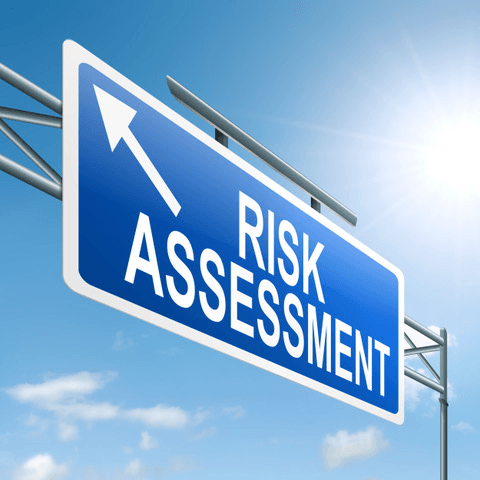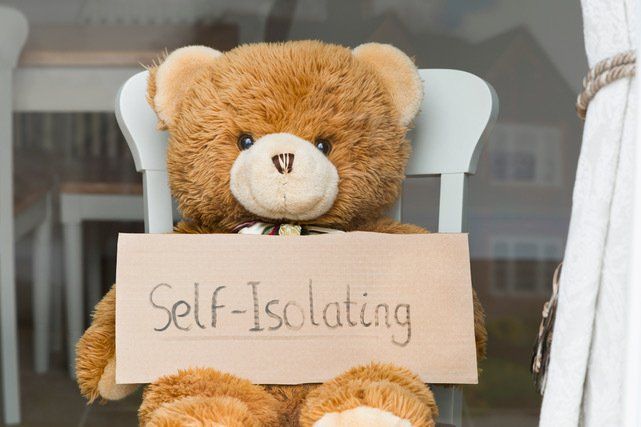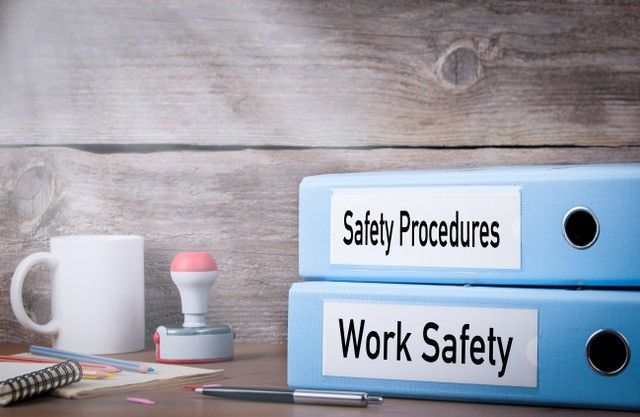Legal Stories

As workers are protected Under the Equality Act 2010 from harassment, including sexual harassment. From 26 October 2010 , Employers will be under a positive duty to ensure they prevent sexual harassment in the workplace. This change will be known as the Worker Protection (Amendment of Equality Act 2010) Act 2023 (the Act) . The change means that employers need to anticipate the circumstances when sexual harassment may occur in the workplace. Employers are then expected to take action to prevent sexual harassment in the workplace. There are 7 steps recommended by the Equality & Human Rights Commission (EHRC) . These are:

In practice, the new regulations represent an amendment to the existing PPE Regulations, rather than a wholesale upheaval. There are no new obligations, instead they seek to extend the duties of employers in relation to PPE by expanding the remit of workers to which the regulations apply. Put simply, whilst employers have always had the duty to provide their direct employees with PPE, this duty will now extend to those working under a contract of service. Companies must urgently engage in introspection and look at the relationship they have with casual workers to assess whether they will be caught by the new regulations. The previous position was that the duties upon employers relating to the provision of PPE to workers were found in the Personal Protective Equipment at Work Regulations 1992 and related only to “employees”. It did not attach any duties towards workers who are not “employees” of an employer. For the purposes of these regulations, the relevant definition of ‘employee’ is as defined in the Health and Safety at Work Act 1974 s.53(1), namely “an individual who works under a contract of employment”. Conversely, the new Regulations have explicitly extended the existing range of PPE obligations beyond the traditional definition of employee to “workers”. The relevant definition of “worker” for the purposes of these new regulations can be found in the Employment Rights Act 1996 which states: “worker” means an individual who has entered into or works under (or, where the employment has ceased, worked under) — (a) a contract of employment, or (b) any other contract, whether express or implied and (if it is express) whether oral or in writing, whereby the individual undertakes to do or personally perform any work or services for another party to the contract whose status is not by virtue of the contract that of a client or customer of any profession or business undertaking carried on by the individual…” If you want more information on risk assessments or any health and safety matters contact Paul at Paul@searchlightels.uk .

What has changed? From 24 February 2022 to 31 March 2022 (the self-isolation transitional period), it is no longer a legal requirement to self-isolate if an employee tests positive for COVID-19. Although there is no legal requirement to self-isolate the public health guidance issued by the UK Health Security Agency, best practice is to stay at home, at least for a full 5 days. Employees may resume their normal practice when they have tested negative from day 5 onwards, for 2 consecutive days providing they don’t have a high temperature. With the removal of the legal requirement to self-isolate, employees are no longer obliged to tell their employers of their COVID-19 status or the requirement to self-isolate. The £500 self-isolation payment has also ended along with the removal of the qualifying days for SSP which ended on 24 March 2022. This means employees who test positive for COVID are not entitled from day one to receive payment for SSP. Routine contact tracing has ended. Where a close contact has been in close contact with a positive COVID person, if they have been fully vaccinated, they are no longer required to self-isolate or test daily for 7 days. Further advice on the current changes can be found here https://www.gov.uk/government/publications/covid-19-people-with-covid-19-and-their-contacts/covid-19-people-with-covid-19-and-their-contacts What changes are happening from 1 April 2022 After the transitional period has ended, those with COVID-19 symptoms will not be required to stay at home or self-isolate. The move is towards ‘exercising personal responsibility’ and to show consideration towards others. Employers will no longer be legally obliged to explicitly consider COVID-19 in their risk assessments. Free testing for COVID-19 with PCR and LFD will end for the public but will remain free for those working in health and social care settings. Separate guidance for employers working in these specific settings can be found here https://www.gov.uk/government/publications/covid-19-management-of-exposed-healthcare-workers-and-patients-in-hospital-settings How should employers respond? The removal of the legal requirement to self-isolate does not prevent employers from developing their own policies. Difficulties may arise where employees disclose that they have COVID but that they feel well enough to work. Employers have a continuing duty of care to ensure the health and welfare of all their staff. Therefore, where an employer has carried out an updated risk assessment taking into account vulnerable members of the workforce, it may be that it is reasonable to insist that an employee remains at home to prevent the risk of further infection to vulnerable members of the workforce. Difficulties arise when it comes to the issue of pay as there is an implied obligation to provide an employee with work and to receive their pay. This has to be balanced with the implied duty to provide a safe place of work which means making sure that workers are protected from anything that may cause harm, controlling any risks to injury or health that could arise within their working environment. The Health and Safety at Work Act 1974 imposes a duty on every employer to ensure as far as is reasonably practicable, the health and safety and welfare at work of all of its employees. This broad duty is underpinned by the Management of Health and Safety at Work Regulations 1999. Furthermore, under regulation 3 of the Management of Health and Safety at Work Regulations 1999, there is the requirement to carry out the risk assessment. Obviously working from home is a clear way of reducing the risk of infection, however, not all sectors are suitable (for working from home) or have this as a viable option. It may be that under section 64 the Employment Rights Act 1996 that medical suspension is an option. This is not a form of sick pay but applies where an employee is capable of work, nonetheless they have to be suspended because of certain risks to their health. This can be costly so employers may need to consider reviewing their self-isolation policies now. If you need assistance or support with the redrafting of these policies, don’t hesitate to get in contact with me directly. Jane Southall Jane.southall@searchlightels.co.uk

HSE is continuing to carry out spot checks and inspections on all types of businesses in all areas to support employers and ensure they are working safely to reduce the risk of coronavirus transmission. If you receive a call, it is important that you act upon it. Employers must still control the risks and review and update their risk assessment. The latest advice on keeping workplaces safe will help you assess the risks and continue to reduce COVID-19 transmission. Further information on the spot check programme is on their website see link below. For more advice on Health & Safety in the workplace, please contact Paul Grimes at Searchlight Employment Law Solutions at paul@searchlightels.uk . https://www.hse.gov.uk/coronavirus/regulating-health-and-safety/spot-inspections.htm

HSE is continuing to carry out spot checks and inspections on all types of businesses in all areas to support employers and ensure they are working safely to reduce the risk of coronavirus transmission. If you receive a call, it is important that you act upon it. Employers must still control the risks and review and update their risk assessment. The latest advice on keeping workplaces safe will help you assess the risks and continue to reduce COVID-19 transmission. Further information on the spot check programme is on their website see link below. For more advice on Health & Safety in the workplace, please contact Paul Grimes at Searchlight Employment Law Solutions at paul@searchlightels.uk . https://www.hse.gov.uk/coronavirus/regulating-health-and-safety/spot-inspections.htm

As the Corona Virus Job Retention Scheme otherwise known as Furlough concludes at the end of September, employers may wish to consider the topic of hybrid working. Hybrid working is otherwise known as blended working where employees who are able to carry out their full range of duties carry out those core duties from home as well as the office. So, what do you need to know as an employer to avoid the pitfalls and get the best out of your employee for hybrid working? 1. Set out the written terms - First, make sure any agreement you have with the employee is set out in writing. A failure to set out an agreement in writing which leads to the employee undertaking hybrid working from the outset of the first lockdown may lead to a change in the contract due to custom and practice, creating more difficulties with getting the employee to return to the office. 2. Consider introducing Hybrid Working as a Trial First – when considering your agreement for hybrid working, decide whether this is permanent or still within the company’s trial stages. Decide how long the trial will be and whether there will be a need for further consultation or an extended trial. 3. Consider whether employees should be able to opt into the trial period for homeworking and what number of employees you are seeking to trial for the hybrid working. It may be that for practical reasons, you allow only a proportion of the employees to take part in the trial based on an application process or you consider rotating the employees who wish to opt into the hybrid working scheme. 4. Consider your reasons for Hybrid Working – do they fit the needs of the company i.e., will they help to retain talented employees, attract new talent and increase productivity? 5. Define which roles are suitable for hybrid working – and state which roles are not suitable for hybrid working i.e., receptionist on front of house, service sector and manufacturing sectors are not suitable where an on-site presence is required 6. Hybrid Working versus Flexible Working – even if you don’t have a hybrid working policy – your employee may submit a statutory request to work in this manner which is essentially a Flexible Working request. Make sure you can distinguish with your employee a request for statutory flexible working hours as opposed to a request to work on a hybrid basis. Do remember all employees who have 26 weeks continued service can submit a statutory request to work flexibly once in any 12-month period. This is no longer limited to parents and carers. You must therefore ensure you follow the correct process for considering a statutory request as distinct from a general application for hybrid working. Remember as an employer you can only refuse a statutory request for flexible working on one or more of 8 defined grounds. (For more information and guidance on managing a statutory request for Flexible Working Hours, please contact me directly). 7. Make it clear where the hybrid working can take place from i.e., not from overseas but within the United Kingdom. If your company is unaccustomed to employees working overseas, you will need to undertake some careful research as to whether there are additional tax implications for you and the employee and whether there are more complex employment rights if the employee is resident outside the United Kingdom. So, make it clear that employees should not undertake travel overseas unless prior written permission has been granted. 8. Requirement to attend site on days normally intended for home working – set out in your policy that the employee may be required to attend the office/ work site to either take part in training days, undertake inductions for new employees, deputise for absent employees; coach or supervise new incoming employees or employees with capability support required. Providing the employee has reasonable notice; there is an expectation that they will at times be required to be in attendance at the office when they would normally have been working at home. 9. Rejecting an application for hybrid homeworking – explain why the employee’s application has been unsuccessful examples, the job is not appropriate for hybrid working, the job requires continued or regular cooperation with colleagues, not satisfied that the employee can work well without supervision. When rejecting an application ensure the employee can appeal the decision. 10. Reiterate the need to guarantee company confidentiality of personal data and their responsibilities to ensure any personal data printed, is carefully retained and disposed of at the work site and not in domestic private bins. Remember any data not responsibly disposed of by hybrid working employees can result in complaints to the Information Commissioner’s Office for which you as the employer will be liable if you don’t have the necessary polices in place. For more information on how to handle hybrid working or flexible working contact Jane on 07861 309 729.

Although the current furlough scheme has been extended until the end of July 2020, it has been extended to run again from August until the end of October 2020 at which point it is anticipated that the scheme will operate on a phased out part-time basis. In addition, some employers have been given the green light to allow employees to return to work where working from home is not entirely possible and it is safe to do so. If you are an employer with employees who cannot work from home and it is safe for your your employees to return to work, here are some additional areas you will need to consider: 1. Check that your business is not listed as a business that should remain closed to the public. If you trade in breach of the regulations issued by the government, you risk a fixed penalty which will potentially increase if you fail to pay the notice or repeatedly do not comply. See the link for more information on which businesses must not open to the public https://www.gov.uk/government/publications/further-businesses-and-premises-to-close/further-businesses-and-premises-to-close-guidance 2. Carry out a COVID-19 Risk Assessment – the guidance issued by the government states that it is non-statutory guidance which should work alongside your existing obligations as an employer relating to health and safety, employment or equality rights. Therefore, although this is not mandatory the guidance issued by the government is a helpful tool to promote confidence in employees returning to the workplace. Carrying out a COVID-19 risk assessment provides a great opportunity to consult with the union, health & safety representatives or the workforce about what risks they may identify and what proposed safety measures the workforce or union may suggest in addition to your own measures to reduce the spread of COVID-19. Consultation with the unions or workers could take place remotely through the use of questionnaires and other forums such as Zoom or Facetime. Risk assessment should be kept under review and changed according to new developments and guidance. 3. Share & Publish the results of your Risk Assessment with the workforce - The government asks that you share the results of your risk assessment with your workforce. If possible, you will be expected to consider publishing the results on your website (and where employer has over 50 workers to do so) the employer is expected to publish this information. 4. Protected Disclosures – An employer who chooses to ignore the social distancing guidelines or fails to implement measures to reasonably safeguard the health and safety of their employees are at risk of employees making claims for protected disclosure or whistle blowing on the grounds of health and safety. Such claims if invoked at the employment tribunal can give rise to unlimited amounts of compensation for injury to feelings. 5. Remember there will be employees who have been identified by their GP and advised to self-shield either due to their age and or underlying conditions. It is important that where there are reasonable adjustments you can make to reduce the risk, that those employees are not exposed to any risk of contracting COVID-19 in the workplace. So, if arrangements can still continue for those employees to work remotely, they should do so. Additionally, risk assessments should be carried out for those employees who are high risk. 6. Discuss with staff how they might feel about a return to work. Question how they will manage to travel to work. For instance, do they have access to their own vehicle or will they be reliant on public transport. You will need to consider whether there should be staggered start times and the new rules and practices for immediate washing of hands before arrival at their desk. On the topic of desks where employees usually work within a pod of desks adjacent to each other, the employer should consider whether there should be less workers on a pod and avoid placing workers directly adjacent to each other. 7. You may want to consider a temporary variation of the employment contract. where there is no capacity to have the entire workforce return, more consideration should be made towards employees working from home. It may be that some employers consider the temporary variation of the contract so that the employee is working part time; subject to review in 6 weeks’ time 8. If you are opening the workplace again, consider during consultation with your employees whether they should take their own temperature before attending work each day so as to be aware of any unusual spikes in temperature. Although a high temperature can be gauged from feeling hot to touch on your chest or back, so you will not need to measure your temperature with a thermometer but it may be a useful recommendation for your workers, to safeguard their heath and the health of their families. 9. Remember; employees may not be able to return to work as easily as before, with schools currently only open to children of key workers. Whilst plans are afoot for reception, year 1 and year 6 to return, there will be workers who will still have primary care for their children which may have a disproportionate impact on single parents, who can no longer rely on grandparents who may need to self-shield. Therefore, bear in mind, those workers juggling home-schooling, childcare, homeworking and being a single parent. 10. Consider what PPE you might need before requiring employees to return. Will there be occasions when workers will need to be in close contact albeit for short periods of time? For instance, if you need to move the furniture around the office to ensure safe working distances, how will this be achieved if more than one person is needed to affect the move? Will you also need facemasks if you need to hold a meeting for a few workers in the board room? If you have a designated break area for workers to heat their meals and eat their lunches, you might want to review this and only allow employees to bring in ready made meals which can be eaten at their desks so as to avoid any build up of employees seeking to use the same appliances. The Department for Business and Industrial Strategy published guidance to help employers, employees and the self-employed understand how to work safely during the coronavirus pandemic, a list of various business and guidance on safe working in the workplace can be found here https://www.gov.uk/guidance/working-safely-during-coronavirus-covid-19

The heat at work should also allow a consideration of whether or not to relax dress codes. Non-customer facing staff should be allowed some flexibility in the clothes they wear while at work. Formal workwear, although looking sharp in corporate marketing, is not the most suitable for ensuring people stay focussed in hot weather. Of course, it would not be necessary to allow beachwear and flip flops, but certainly an increase in “dress down” days will help to ease the burden of consistently high temperatures on staff. There is no obligation on employers to relax their dress code but even a concession to allow smart casual rather than suits and ties, will show employees that their employer has shown some thought to their comfort. Perhaps establish a summer dress code which can be reviewed at the end of each year to ensure the balance between smartness and comfort is maintained in light of changing fashion trends More generally ensuring a supply of cold water/drinks keeps employees hydrated and shows employees that their employer does consider their situation. Check that windows can be opened to allow air to circulate and also that they are capable of being masked with blinds, so glare does not make desk screens difficult to read. Moveable desk fans are helpful for those seated away from windows and the small expense can go far in again showing employees that their employer does seek to minimise the impact of the prolonged heat. Finally, for workers outside, ensure they have been provided with the necessary sunscreen. When the temperatures rise so too does the potential for problems in the workplace. Mix the heat with the World Cup and the number of issues can increase. On first consideration good weather and a sporting event should be positive for workplace morale. Whether celebrating victories or lamenting lost opportunities employees can bond, even those who share over a disdain for the world cup and perhaps prefer the relative merits of Love Island. Although anything that improves inter-employee relationships at no cost to an employer should not be missed, there are also the bear traps of lost productivity and drop offs in attendance and punctuality. It is up to an employer to navigate these difficult waters and get the best of one without losing all advantages gained through the other. Perhaps the best place to start is temperature. There is no law stating what is a maximum temperature in the workplace, apart from that the temperature should be reasonable. What is reasonable for an employee undertaking desk work may not be so reasonable for employees carrying out repetitive physical activity. In addition, employees who are pregnant or who have a long term medical condition need extra consideration. Employers have a duty of care to employees over and above the fairly general directions of employment law. They have a duty to make reasonable adjustments for disabled employees. Therefore, risk assessments should be undertaken for employees who suffer disproportionately from the heat. Those living in the UK are familiar with the refrain from train companies that leaves on the line or unexpected snow falls have interrupted the smooth running of services. This can lead to a drop-in punctuality for many employees, even though they do their best to arrive on time. Although these disruptions are expected in Autumn and Winter, it appears that the prolonged heat is affecting the transport infrastructure in England. The heat has caused the expansion of metal in rail lines which makes certain train speeds unsafe or even preventing the running of a train at all on that section of the route. It has also caused swing bridges to jam meaning that vehicle routes are blocked with the inevitable traffic jams in roads around the crossing. The impact on attendance and punctuality is obvious but it may be worthwhile checking exactly where the disruptions are locally. This will ensure employees are not taking advantage of word of mouth transport difficulties which in fact do not affect them at all. By giving thought to how the workplace responds to the heat, will not only maintain productivity but also show employees that you value their comfort and will do your best to make a workday as pleasant as it can be, without relocating to the beach!


